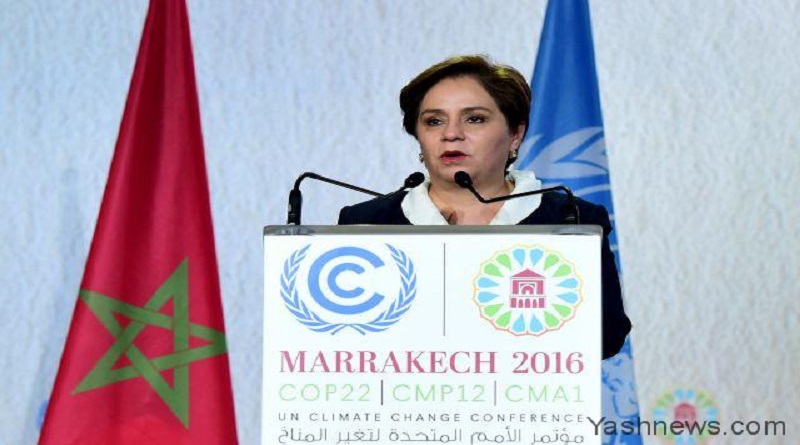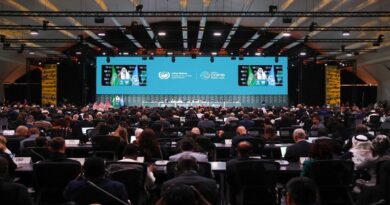Espinosa: Marrakech saw unparalleled political will to act on climate
Shortly after the conclusion of the UN Climate Change Conference in Marrakech, the UN’s top climate change official Patricia Espinosa visited Norway, where she met with government and local leaders and gave a speech at the 2016 Zero Emission Conference in Oslo. Hosted by the Norwegian NGO ZERO, the conference was designed to show that it is possible to create a thriving, modern society without the use of fossil fuels or fossil based materials, and with zero greenhouse gas emissions. In her speech, the Executive Secretary of the UN Framework Convention on Climate Change Patricia Espinosa summed up the central outcomes of the UN Climate Change Conference in Marrakech, along with outlining the next steps for international, national and local climate action, and addressed the issue of what specifically Norway can do to help implement the Paris Climate Change Agreement. Here is her address:
Let me start by thanking the Zero Emission Resource Organisation for the invitation to join the 2016 Zero Emission Conference. I’d also like to thank you all for coming and discussing what is expected from Norway, and indeed from every country around the world, now that the Paris Agreement has entered into force.
The question of what’s next has certainly been in thoughts of many individuals and institutions.
As I am sure you know, we just wrapped up COP 22 in Marrakech. This latest climate change conference gave some good insight into what’s next. Let me share a few insights from Marrakech.
First, I saw unparalleled political will to act on climate change. The momentum that carried us from hundreds of thousands of people in the streets at the People’s Climate March in 2014… to an ambitious agreement in Paris last year has not diminished.
Political will brought the Paris Agreement into force just days before this year’s conference in Marrakech, setting a tone for the meeting and allowing us to hold the historic first Conference of the Parties to the Paris Agreement.
Second, Marrakech featured close cooperation to advance critical issues, which can be seen in the conference outcomes. Governments took a crucial step towards writing the rules of the Paris Agreement. They outlined the finance, technology and capacity building support that enables the developing world to move to low-emission development and build resilience. Marrakech featured long-term de-carbonization plans from major emitters and medium-income countries.
The Marrakech Action Proclamation unites nations in the determination to implement the Paris Agreement and Sustainable Development Goals.
This is all very positive and shows that governments are willing to work together. It also sends a strong signal that we have unstoppable global momentum on climate change and sustainable development.
Third and finally, Marrakech shined a light on movement in markets and in the private sector. And it highlighted climate actions by local governments.
In markets, we see a transformation to low-emission. The clean energy market is growing and now it makes more sense to choose renewable energy over all others. Investors are moving to cleaner, greener assets to secure stable returns. Throughout the private sector, we see high efficiency operations, sustainable supply chains and products that reduce consumer’s climate footprint.
Local governments are moving in the same direction. From cleaner air and adequate water to educated workers who can thrive in the green economy, community-level climate action clearly benefits people.
This is why what comes next is so important – our actions over the coming months and years will make a positive difference in the lives of billions of people.
So what is next?
We now need all nations to ratify the agreement and quickly act on their national contributions to the agreement. Norway is a leader in this regard.
Norway was the first industrialized nation to ratify the Paris Agreement and has set an ambitious target. The government here plans to reduce emissions by 40 percent by pointing energy, transportation, agriculture and industry at low-emission models.
The intention is to accomplish this by 2030, which is also the year Norway plans to be carbon-neutral. This is at least 20 years sooner than the long-term goal in the Paris Agreement to be climate neutral in the second half of the century.
This nation has a strong history as a leader and serves as an example for how overachieving can be done by a developed country. This leadership is clearly seen in Norway’s donor support for the intergovernmental climate process, and in your support for climate action in developing countries.
In this new implementation phase, the climate change Secretariat will face many challenges to adapt to our new global realities. We need your continued support, as do many countries around the world.
Achieving an ambitious transformation requires a rapid move towards zero-emission solutions. The Paris Climate Change Agreement and Sustainable Development Goals agreed last year provide the direction we need to go and a framework for solutions.
And friends, many solutions are needed.
This is where you can make a significant difference. You can help Norway capitalize on this leadership opportunity by spreading low-emission – and no-emission – solutions across the world.
The best and brightest minds, the innovators and influencers in public and private sectors, now need to step up and lead.
You have the opportunity to deploy technology that shows that a move to zero-emission personal and public transportation is possible for an entire country. You can accelerate the transformation to your own green economy through financial innovation and cooperation.
You can support other countries as they look to do the same. Procurement that protects forests is a great start, but there is so much more than can be done. For example, you can continue to research and work on solutions like carbon capture and storage that can align the fossil fuel infrastructure we cannot avoid with the zero-emission future we absolutely need.
Norway is truly positioned at the forefront of action. And now is the time to act.
The Paris Agreement and SDGs must promote these solutions and more, here and in every country. Zero-emission solutions should be integrated into all national development plans, all business models and into the everyday lives of all citizens.
This is what’s next – improving the lives and livelihoods of people in local communities, while making significant gains towards our common global goals.
We must build on progress made to date. We must work together to spread these solutions around the world, across societies and sectors of the economy.
Together we can deliver a future that is peaceful and prosperous for all, using low-emission solutions that keep our planet healthy and livable.



